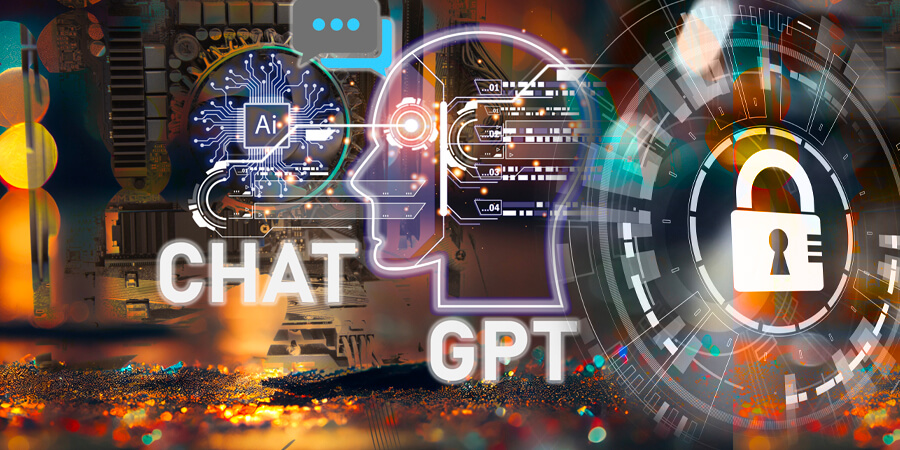The emergence of artificial intelligence (AI) technology promises a significant impact on cybersecurity for both individuals and businesses. But even OpenAI, with its powerful language model, ChatGPT, is not immune to the potential risks and challenges. While AI tools offer considerable advantages to various industries, they also introduce new concerns for digital security. ChatGPT's natural language processing abilities, for instance, could enable the creation of highly targeted and advanced cyberattacks.
ChatGPT and other AI-powered security solutions can also help telecom companies comply with regulations such as GDPR, which requires organizations to ensure the privacy and security of customer data. Through advanced natural language processing, AI can help organizations identify sensitive information and flag potential breaches to ensure compliance with regulatory requirements.
The Impact of AI on Cybersecurity
AI has a significant impact on cybersecurity. Here are some of the ways that AI is shaping the field of cybersecurity:
- Threat detection: AI algorithms can be trained to identify patterns and anomalies in data that may indicate a cyberattack. Machine learning models can be used to analyze large amounts of data and identify threats faster and more accurately than humans.
- Real-time response: AI can be used to automate responses to cyber threats in real time, reducing the time it takes to detect and respond to an attack. AI-powered security systems can be programmed to automatically isolate an infected device, shut down a compromised system, or alert security personnel to a potential breach.
- Predictive analytics: AI algorithms can be used to analyze historical data to predict future cyber threats. This allows security teams to proactively identify vulnerabilities and take preventive measures to protect against potential attacks.
- Automation: AI can automate routine security tasks, such as patch management, vulnerability assessment and compliance monitoring. This frees up security personnel to focus on more strategic tasks and reduces the risk of human error.
- Adversarial attacks: AI is also being used to develop more sophisticated cyberattacks. Adversarial attacks use AI algorithms to evade detection and bypass security measures. This has led to the development of AI-powered security systems that can detect and respond to adversarial attacks.
- Fake news and propaganda: ChatGPT can be used to generate fake news and propaganda, which can manipulate public opinion and create panic and confusion.
Weapon or Tool?
The use of AI in cybersecurity can be either a tool or a weapon, depending on how it is utilized. As a powerful tool, AI can be used to improve digital security by detecting and responding to threats faster and more accurately. However, AI can also be used as a weapon by malicious actors to launch highly targeted and sophisticated cyberattacks. Ultimately, it is up to the user to decide whether to use AI for positive or negative purposes. Organizations such as OpenAI are committed to ensuring the ethical and responsible use of AI, but it is also essential for businesses to prioritize cybersecurity measures and implement ethical frameworks and regulations to prevent AI from being used for malicious activities.
How to Enhance Safety
To enhance safety and protect against cyber threats, organizations can take several steps. First, they should implement strong cybersecurity measures such as firewalls, antivirus software, intrusion detection systems and encryption. Additionally, implementing Multi-Factor Authentication (MFA) adds an extra layer of security, requiring users to provide multiple forms of identification to access their accounts, which can prevent unauthorized access even if a hacker has compromised a user's password. Educating users about security dos and don'ts, such as avoiding suspicious links, updating software regularly and being wary of unsolicited emails or messages, is also essential.
Leveraging advanced Machine Learning algorithms can be used to detect and prevent attacks that leverage OpenAI and ChatGPT. These algorithms can identify patterns and anomalies that traditional security measures might miss. Network Segmentation involves dividing a network into smaller, isolated segments, which can help isolate the spread of an attack if one segment is compromised. Developing ethical frameworks and regulations for the use of AI can help ensure that ChatGPT is used for positive purposes and not for malicious activities.
Investing in employee training is crucial for enhancing safety. Educating employees about the risks of cyber threats and how to prevent them is essential. Training should include best practices for password management, email security and social engineering awareness. Conducting regular audits to identify vulnerabilities and weaknesses in the organization's cybersecurity infrastructure can help prevent breaches. Finally, establishing automated response systems that can detect and respond to attacks quickly, minimizing damage and ensuring that security software is up-to-date can help protect against the latest cybersecurity threats.
Overall, the use of AI, specifically ChatGPT, is a game-changer in the telecom industry's efforts to secure its networks and protect its customers. With the increasing complexity of digital threats, AI's ability to detect and respond to these threats is crucial to ensuring the industry's safety and reliability. As the telecom industry continues to evolve and embrace digital transformation, AI-powered cybersecurity solutions will become increasingly essential for protecting critical digital infrastructures.
